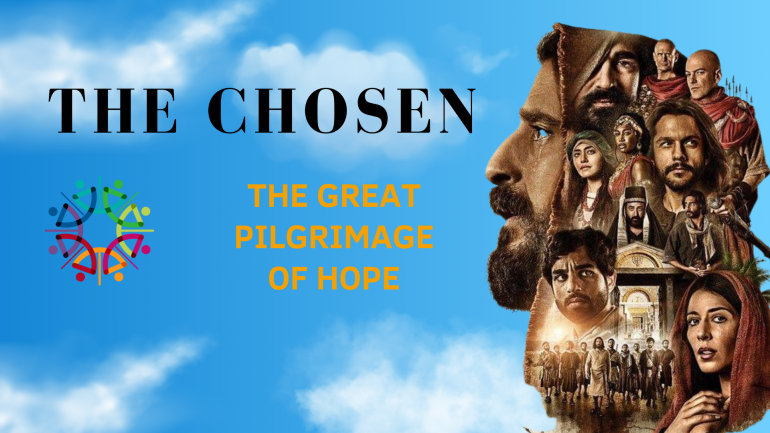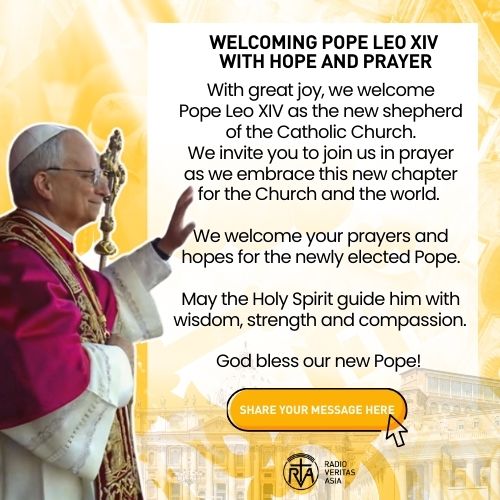Encounter through “The Chosen”: The Great Pilgrimage of Hope

The Great Pilgrimage of Hope, to be held in Penang, Malaysia, from November 27–30, 2025, will gather Catholics across Asia for a journey of faith, dialogue, and renewal. Among its highlights is an impact session on The Chosen series.
Few television projects in recent memory have captured the imagination of Christians around the world like The Chosen. Created and directed by Dallas Jenkins, this multi-season series is the first- ever long-form dramatisation of the life of Jesus and his disciples. It is entirely crowdfunded, translated into more than 50 languages, and freely streamed online, indeed a remarkable example of faith meeting creativity.
What sets The Chosen apart is its intimacy. Rather than presenting Jesus as a distant divine figure, it portrays him as deeply human and relational, laughing with friends, teasing his disciples, embracing the broken. Through the eyes of those who knew him best, Mary Magdalene, Peter, Matthew, Nicodemus, the Gospel becomes a living, breathing story. For many viewers, The Chosen is not just entertainment; it is a sacred encounter.
To watch The Chosen is to step into a living Gospel. It draws you into dusty roads, crowded markets, and quiet lakesides where Jesus meets ordinary people and transforms their lives. In a world flooded with screens and scrolling, The Chosen manages something rare: it slows us down. It invites us not to consume, but to contemplate. Each episode breathes with intimacy, a tear, a smile, a hesitant “follow me.” For countless viewers across Asia, the story does not end with the credits. It continues in their hearts, homes, and faith communities.
Encounter
At its core, The Chosen is not about spectacle but relationship. Its theology is woven through encounter, how grace unfolds in the fragile spaces of human life. We meet Jesus not as a statue in a church or a name in a book, but as someone deeply human: eating, joking, weeping, resting. The Gospel becomes flesh again, this time through the lens of digital storytelling.
What makes the series theologically striking is its incarnational imagination. Just as God took human form in Jesus, The Chosen takes sacred story into a human art form, “film”. It’s theology in motion, reminding us that God continues to reveal himself through culture, creativity, and community. Each scene reflects what Pope Francis calls “the culture of encounter,” where faith is not argued but experienced.
Story Telling
For Asian Catholics, The Chosen holds special resonance. The series speaks the language of relationship, family, and compassion, values deeply woven into Asian life. We are people who gather around stories at the dinner table, during festivals, through songs and rituals. Faith for us is not merely taught; it is told. It lives in the stories of our grandparents, in the way we pray, cook, celebrate, and care for one another.
When we see the disciples laughing around a fire or Mary comforting another, something familiar stirs within us. The Gospel no longer feels distant or ancient; it feels close, familial like home. Jesus’ compassion for the outcast echoes the Asian heart that honours hospitality, the same spirit that inspires Atithi Devo Bhava, to see the guest as God. Every act of welcome in the Gospels, from a shared meal to a healing touch, mirrors this sacred reverence for the other. His deep respect for women and elders speaks to our cultural sensibilities, and His patience with His disciples mirrors our slow and steady journey towards faith.
Community
One of Asia’s great treasures is its sense of community. We understand life not as “I” but as “we.” The Chosen builds its entire storytelling around that truth. Every character, whether Peter, Matthew, or Mary Magdalene, finds meaning only in relationship with Jesus and others. Faith grows in community, not isolation. This mirrors the Asian Church’s own experience. From small Christian communities in India to youth fellowships in the Philippines, faith is rediscovered when it is shared.
Hope
Asia today is a continent of contrasts, of booming cities and quiet suffering, of digital connection and deep loneliness. Amid political unrest, migration, and poverty, hope can feel fragile. Yet, The Chosen speaks directly into this fragility. It's Jesus meets people in their brokenness, not their perfection. He restores not by erasing pain, but by sharing it.
That’s the Gospel Asia needs. A hope that doesn’t deny suffering but transforms it. As we watch Jesus look at Matthew, the tax collector, with eyes of mercy, we remember that no one is beyond redemption. As we see Him multiply loaves, we recognise that hope grows when it is shared. This visual theology moves hearts more powerfully than words ever could.
Dialogue
Pope John Paul II once called Asia “a continent of storytelling.” Indeed, this land, a boiling pot of cultures, languages, and diverse traditions, has always found God through story, symbol, and song. Today, those stories unfold on screens. Our digital spaces have become the new mission fields where faith meets imagination. In parishes and schools, screenings of The Chosen can become moments of encounter and dialogue, especially with those who feel distant from the Church. It can also open interreligious doors, as Jesus’ compassion and forgiveness resonate deeply beyond Christian circles. It is not an argument for belief but an invitation to experience love.
Conclusion
For the Asian Church, The Chosen offers more than entertainment, it teaches us to open ourselves to others, to listen, welcome, and walk together in faith. Through shared reflection on the series, communities can rediscover the Gospel as a living story, strengthening bonds of fellowship, compassion, and hope across diverse cultures and traditions.










Stating our God is truly human.
The explanation is thorough and wonderful.
Kudos to Bro Joshua D'Souza
- Reply
Permalink